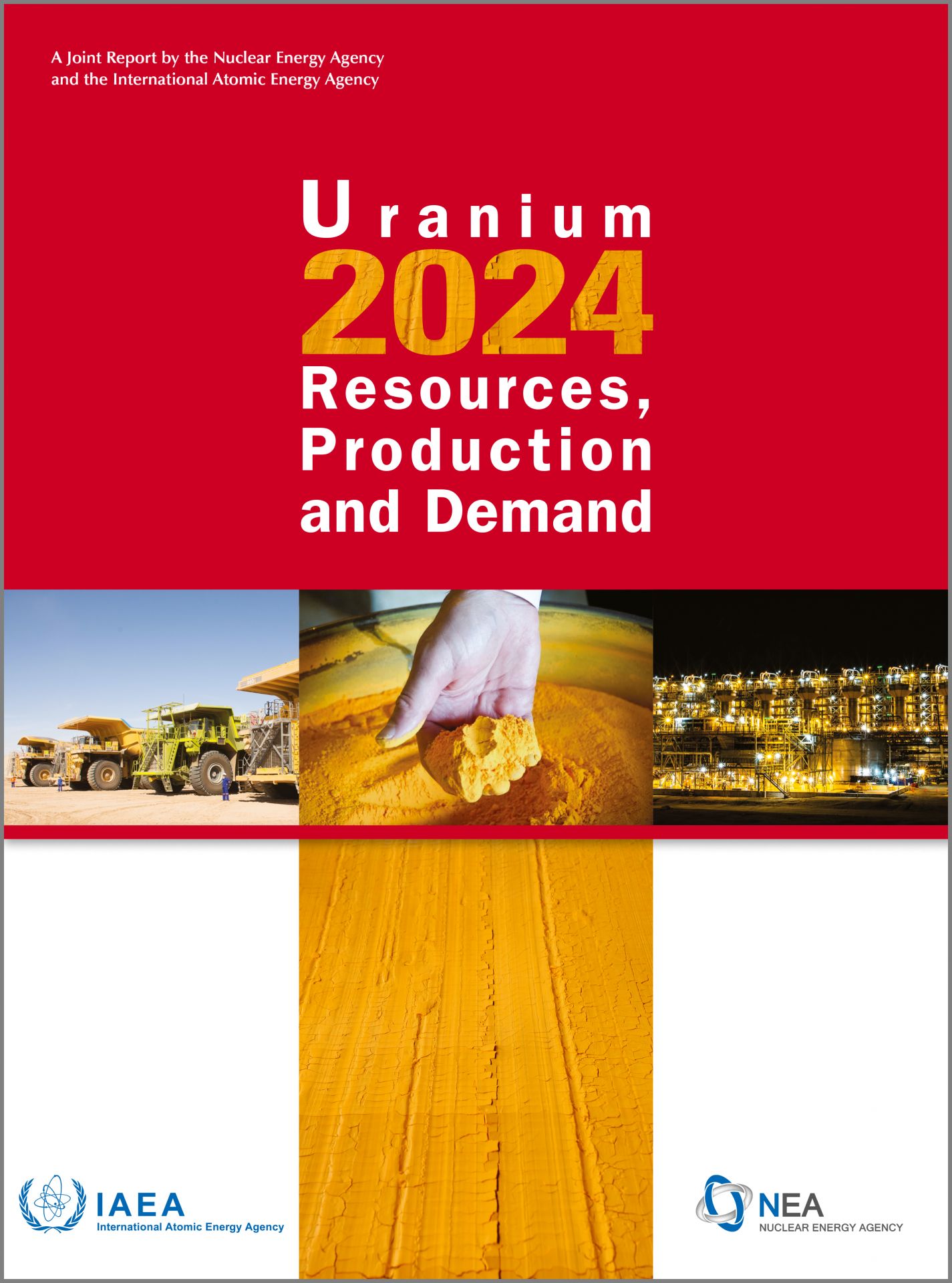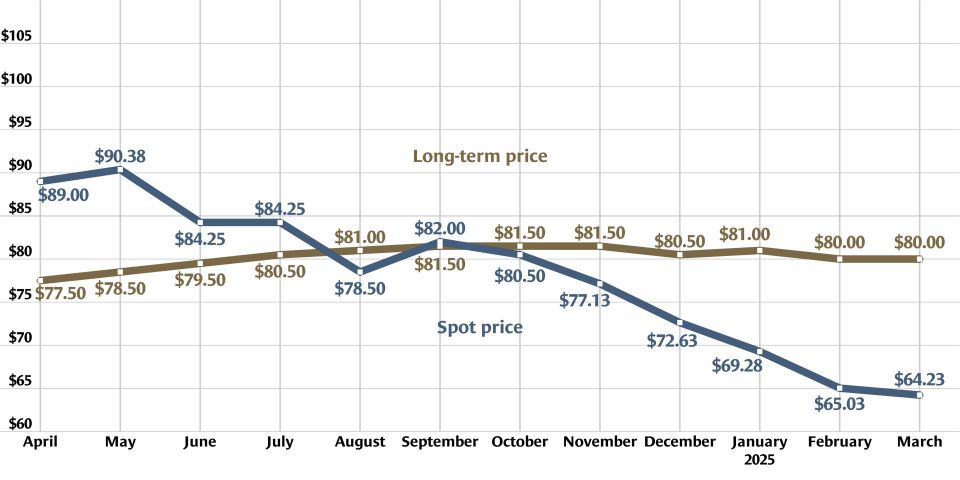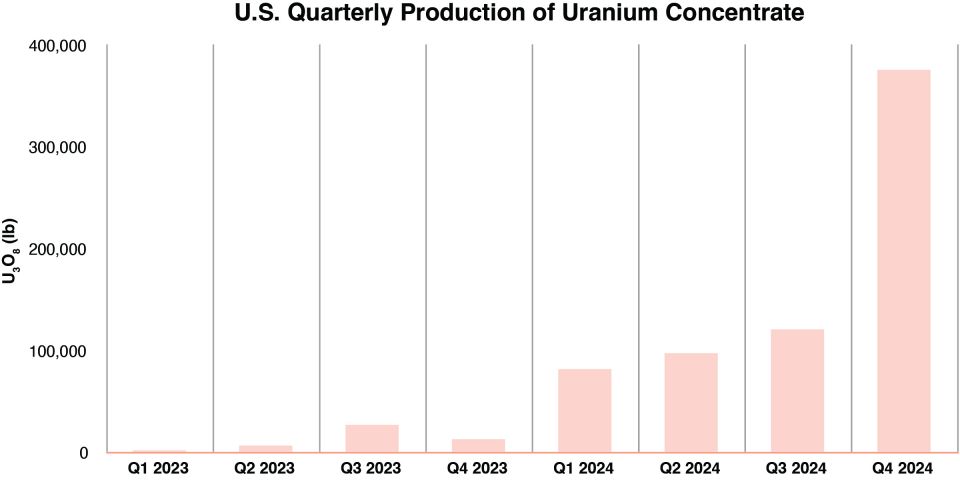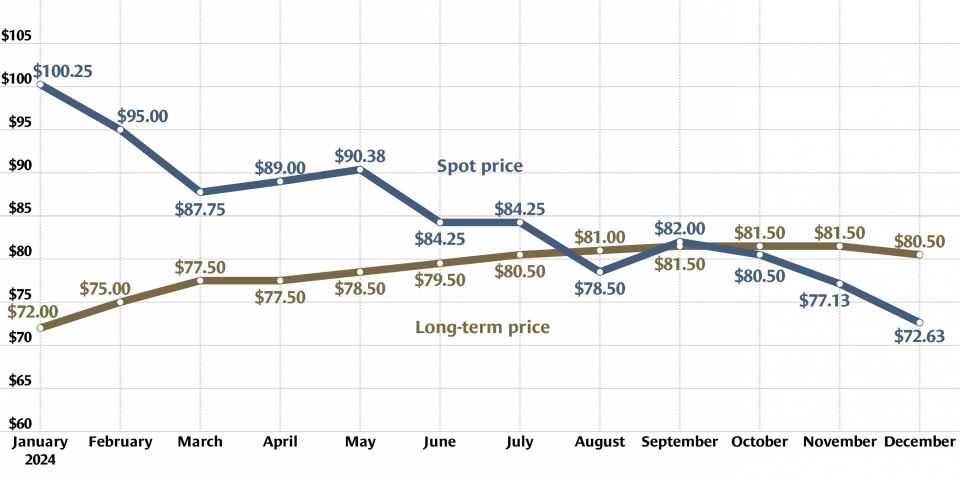The book, now in its 30th edition, is a joint effort from the OECD Nuclear Energy Agency and the International Atomic Energy Agency. It offers expert analyses and insights from 62 uranium-producing and uranium-consuming countries.
This edition’s updated information comes mostly from 2021 and 2022, with some data from 2023 and 2024. Included is updated information on uranium production centers and plans for mine developments, as well as projections on nuclear generating capacity and expected reactor-related requirements through 2050.
Overall resources: According to the executive summary, total global uranium resources are largely unchanged since the previous edition, which was published in 2022.
The global uranium resources market continues to be dominated by Australia, with 28 percent of the total identified recoverable resources, followed by Kazakhstan (14 percent) and Canada (10 percent).
Potential: According to the Red Book, “Future additions to the conventional resource base could come from undiscovered (prognosticated and speculative) resources of just over 7.9 million tU [metric tons of uranium] (7% increase from the previous edition), coincidentally the same value as total identified resources. Unconventional resources are another source of potential future supply and . . . currently amount to about 57 million tU.”
Exploration, development: The report emphasizes that the overall worldwide domestic exploration and mine development expenditures have dramatically changed in the last few years. Annual expenditures, which decreased to approximately $380 million in 2020 from more than $1.5 billion in the years prior to the downturn, recovered to $800 million in 2022. Preliminary data for 2023 expenditures suggest a further increase to $840 million.
Production increases: Uranium production has increased in recent years, with Kazakhstan remaining the world’s largest producer, at 43 percent of global production. Kazakhstan’s production alone in 2022 amounted to more than the combined production from Canada, Namibia, Australia, and Uzbekistan, respectively the second- through fifth-largest uranium producers in 2022.
Supply and demand: “As of 1 January 2023, a total of 438 commercial nuclear reactors were operational globally, with a net generating capacity of 394 GWe requiring about 59,000 tU annually,” the Red Book states. “Taking into account changes in policies announced in several countries and nuclear programmes as of 1 January 2023, world nuclear capacity by 2050 is projected to increase to 574 GWe in the low demand case, and to 900 GWe in the high demand case, an increase compared to 2022 capacity of around 45% and 130% respectively.”
The report goes on to say that sustaining high- and low-growth demand scenarios beyond 2050 makes “investment in uranium exploration and new production centers essential to replenish depleted reserves.”
Advanced reactors: Other conclusions drawn in the Red Book are related to the promise of advanced reactors, combined with the challenges of geopolitical tensions and climate goals, which suggest a positive outlook for uranium demand, particularly as small modular reactors gain traction.
 The latest edition of Uranium 2024: Resources, Production and Demand, commonly known as the Red Book, reports that current uranium resources are sufficient to meet low- and high-growth nuclear capacity needs through 2050 and beyond, but that further development of resources is still required. Even if nuclear capacity remains stable at 2050 levels through the end of the century, the report noted that cumulative demand “could exceed the current identified uranium resource base of nearly 8 million tonnes by the 2080s under the low-growth demand scenario and by the 2110s under the high-growth demand scenario outlined in this edition.”
The latest edition of Uranium 2024: Resources, Production and Demand, commonly known as the Red Book, reports that current uranium resources are sufficient to meet low- and high-growth nuclear capacity needs through 2050 and beyond, but that further development of resources is still required. Even if nuclear capacity remains stable at 2050 levels through the end of the century, the report noted that cumulative demand “could exceed the current identified uranium resource base of nearly 8 million tonnes by the 2080s under the low-growth demand scenario and by the 2110s under the high-growth demand scenario outlined in this edition.”






